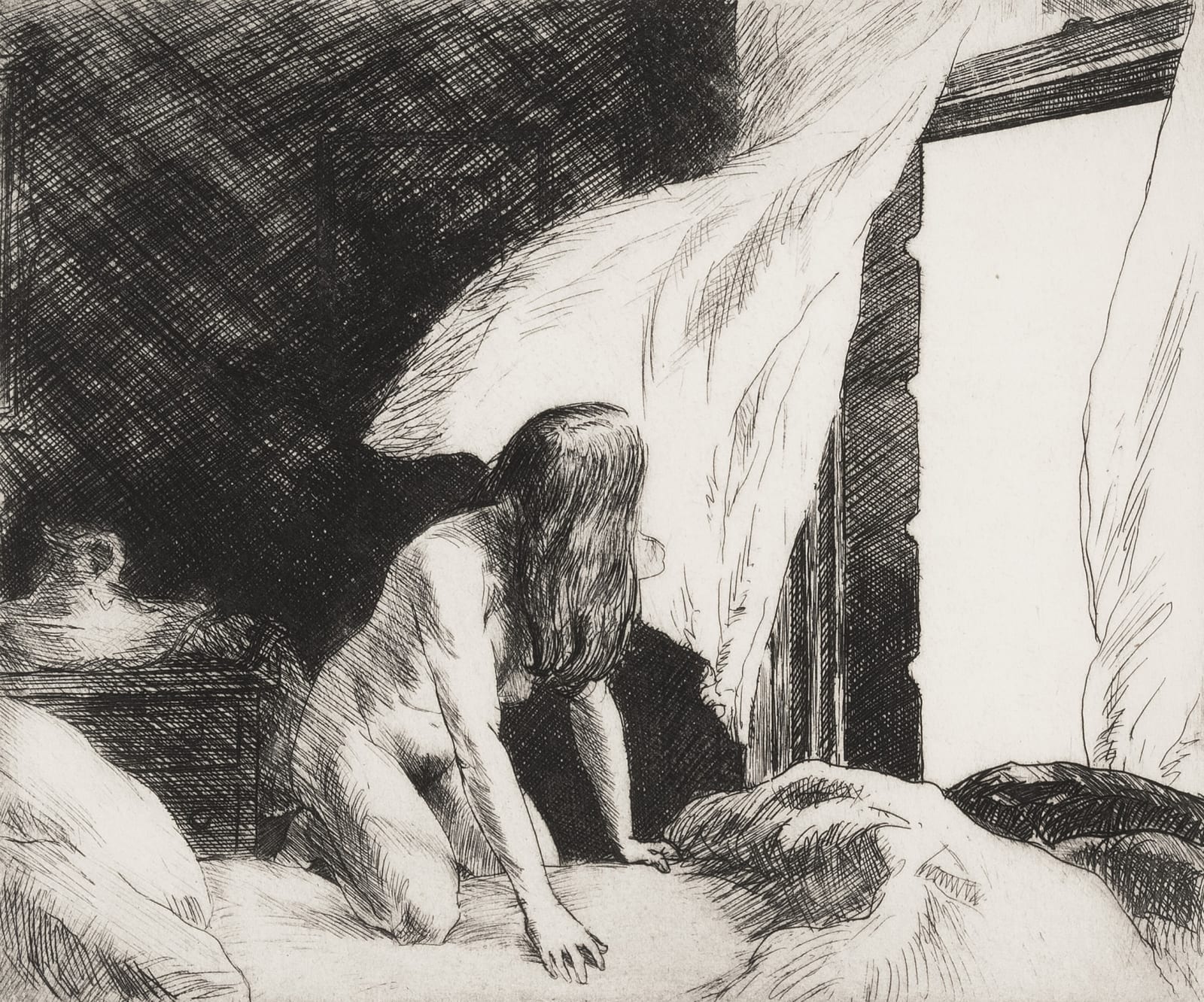Edward Hopper American, 1882-1967
Evening Wind, 1921
Etching
7 x 8 1/4 inches (image)
9 1/2 x 10 7/8 inches (sheet)
9 1/2 x 10 7/8 inches (sheet)
Edition of about 100
Signed at lower right: Edward Hopper
In 1921, Hopper embarked on a series of pictures depicting a nude woman gazing through an open window at the world beyond. Evening Wind is the most romantic of these,...
In 1921, Hopper embarked on a series of pictures depicting a nude woman gazing through an open window at the world beyond. Evening Wind is the most romantic of these, and the most sensuous. The woman’s thick, dark hair falls forward as she climbs into bed, while the breeze blowing the curtains seems to caress her figure. The preparatory drawing for Evening Wind (Whitney Museum of American Art) includes a number of domestic details—the ironstone pitcher, the pictures on the walls—that are minimized or eliminated in the print to further dramatize the contrast between the cozy intimacy of the room and the tantalizing brightness of the world outside.
The antecedents for this print are numerous, and distinguished. Hopper admired the etchings of John Sloan, whose Turning Out the Light (1906) tells a lustier version of the story implied in Evening Wind. Rembrandt, Hopper’s favorite among old-master printmakers, made several prints featuring contemplative nudes in domestic settings. Their tender, unadorned realism and dreamy sensuality provide precedent for Evening Wind. But its roots are not just in genre scenes: one critic has interpreted it as the myth of Danae and the shower of gold “translated to a frowsy New York flat in which the yearnings of the nude rising from her rumpled bed are answered only by the night breeze that stirs the curtains and leaves her all alone.”
The antecedents for this print are numerous, and distinguished. Hopper admired the etchings of John Sloan, whose Turning Out the Light (1906) tells a lustier version of the story implied in Evening Wind. Rembrandt, Hopper’s favorite among old-master printmakers, made several prints featuring contemplative nudes in domestic settings. Their tender, unadorned realism and dreamy sensuality provide precedent for Evening Wind. But its roots are not just in genre scenes: one critic has interpreted it as the myth of Danae and the shower of gold “translated to a frowsy New York flat in which the yearnings of the nude rising from her rumpled bed are answered only by the night breeze that stirs the curtains and leaves her all alone.”


